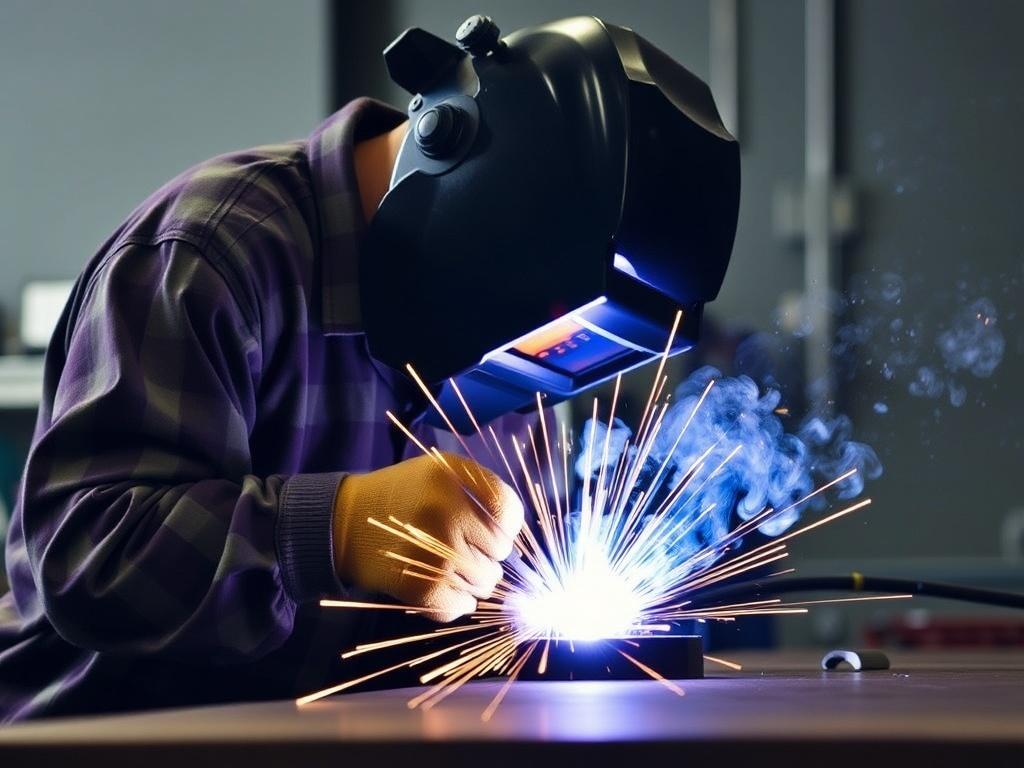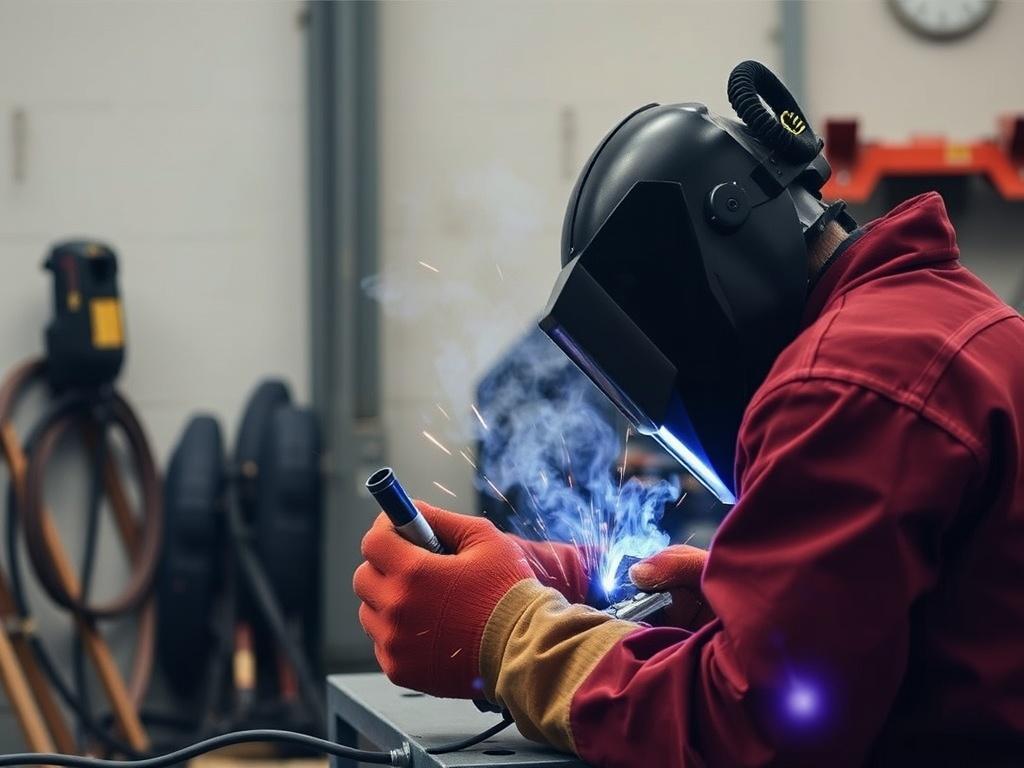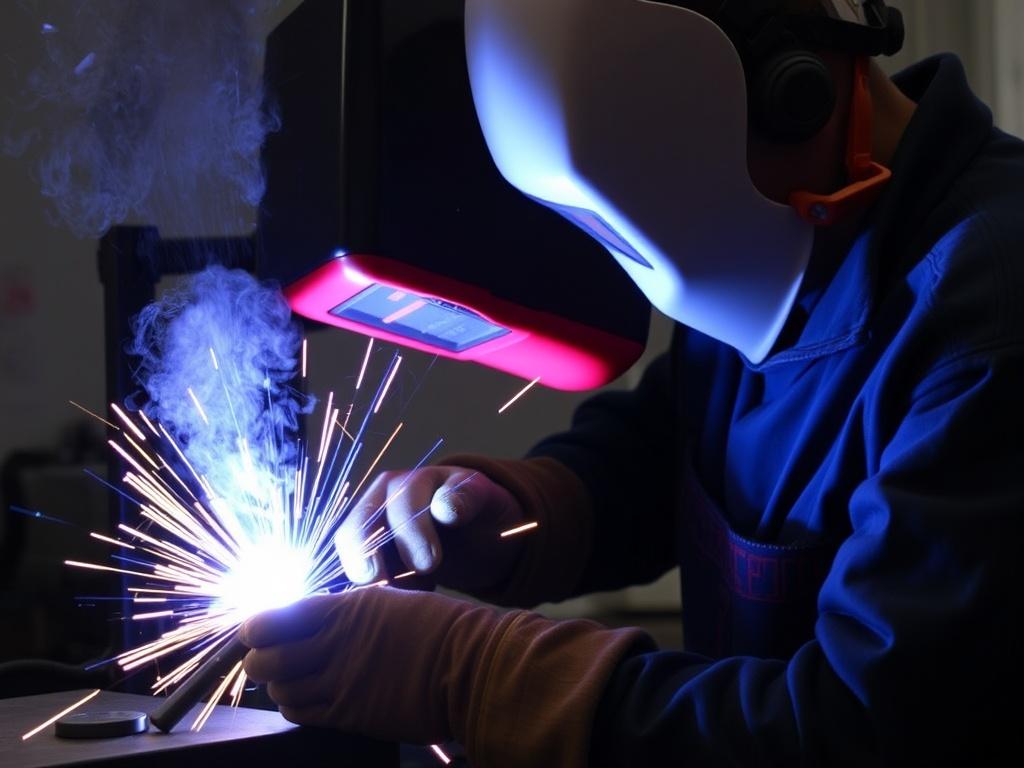
Welding is a fascinating craft that has been integral to human progress for centuries. Whether you’re driving a car, living in a steel-framed building, or even using your smartphone, welding has played a crucial role behind the scenes. If you’ve ever wondered, “What is welding?” or thought about trying it yourself, this beginner’s guide is designed just for you. In this article, we’ll explore welding from its basic definition to the different types, tools, techniques, and safety precautions—everything you need to get started with confidence.
Understanding the Basics: What Is Welding?

At its core, welding is the process of joining two or more pieces of metal (or sometimes thermoplastics) by heating them to a point where the parts melt and fuse together, forming a strong, permanent bond. The key to welding is producing enough heat to melt the base materials and, often, a filler material that adds strength and fills gaps. Unlike other joining methods such as bolting or riveting, welding creates a seamless union that is often as strong as the metal itself.
This process has been evolving for centuries. Early forms of welding involved blacksmithing, where metal was heated in a forge and hammered together. Now, with advanced technologies, welding spans applications from small repairs in your garage to massive infrastructure projects like bridges, pipelines, and spacecraft.
Welding isn’t just about “melting” metal. It involves a deep understanding of metallurgy, heat control, protection from contamination, and the unique challenges presented by different metals. For a beginner, this might feel overwhelming, but as you dive in, you’ll discover that welding is a skill you can master with practice and patience.
The Science Behind Welding
Welding brings metals together by applying heat, often exceeding 6,000 degrees Fahrenheit in some techniques, enough to liquefy the metals involved. When these molten metals cool down, they solidify to form a strong joint. On a microscopic level, welding changes the metal’s grain structure at and around the joint, creating a fusion zone known as the weld bead. This fusion zone’s characteristics depend on factors like heat input, cooling rate, and the materials used.
In addition to heat, some welding techniques use pressure or other energy sources like ultrasonic vibrations or chemical reactions. Although these are less common in beginner practice, being aware of such processes broadens your understanding of the field.
Why Is Welding Important? The Role It Plays in Everyday Life
You might not immediately see welding, yet it touches nearly every aspect of modern life. From your car’s sturdy frame to the skyscrapers towering around you, welding is fundamental in creating strong, reliable structures and products. Think about the bridges you cross, the rails where trains run, the pipelines delivering water and gas, or the airplanes soaring through the sky—they all rely on welding technology.
Furthermore, welding enables creativity in art and manufacturing. Sculptors use welding to bring their metal visions to life. Inventors depend on welding to fabricate prototype parts. Maintenance professionals use welding every day to repair broken machinery and extend equipment life.
In industry, welding helps reduce weight while maintaining strength, making products safer and more efficient. Innovations like robotic welding have sped up production and increased precision, revolutionizing manufacturing.
Types of Welding: Exploring the Most Common Methods
There are numerous welding methods, each with its unique advantages, challenges, and applications. Understanding the types of welding is essential for a beginner to choose the right method for their project. Let’s explore some of the most commonly used types:
1. Shielded Metal Arc Welding (SMAW) – Also Known as Stick Welding
Stick welding is one of the oldest and simplest forms of welding, making it ideal for beginners. It uses a consumable electrode coated in flux. When the electrode touches the metal, it creates an electric arc that melts the base metal and electrode tip, forming the weld. The flux coating produces a protective gas and slag, guarding the molten metal from atmospheric contamination.
Stick welding works well outdoors and on rusty or dirty metals but requires practice to maintain the arc properly. It’s versatile and widely used in construction and repair work.
2. Gas Metal Arc Welding (GMAW) – Commonly Known as MIG Welding
MIG welding uses a wire feed as an electrode and an inert gas such as argon or CO₂ to protect the weld pool. It’s easier to learn than stick welding because the wire feeds automatically, allowing for longer welds and less stoppage. MIG welding produces cleaner welds and is generally faster.
Many beginners start with MIG welding because it offers good control, is relatively safe, and works well on various metals, including steel, aluminum, and stainless steel.
3. Gas Tungsten Arc Welding (GTAW) – Often Called TIG Welding
TIG welding uses a non-consumable tungsten electrode to generate the arc and an inert shielding gas (usually argon). The welder manually feeds filler material as needed. TIG offers extraordinary control and precision, producing very clean, high-quality welds.
This method is common in aerospace, automotive, and artistic welding but requires more advanced skills and coordination. Beginners who want to master weld aesthetics and weld on thin materials might eventually progress to TIG welding.
4. Flux-Cored Arc Welding (FCAW)
Flux-cored welding uses a tubular wire filled with flux. Like MIG welding, it uses a welding gun but can be done with or without external shielding gas, depending on the wire type. It’s faster than stick welding and suitable for thick metals, heavy construction, and outdoor work.
It’s often used when portability is essential or when working in windy environments where gas shielding would be disturbed.
5. Other Welding Types Worth Knowing
- Spot welding: A resistance welding method mainly for thin sheet metals, often used in automotive production.
- Plasma arc welding: Uses plasma to achieve higher precision and temperature control.
- Electron beam and laser welding: High-tech, highly precise, used in specialized industries like aerospace.
Welding Equipment and Tools: What You Need to Get Started

Before you dive into welding, it’s essential to understand the gear you’ll need for a safe and successful experience. A proper welding setup includes not just the welder itself but various tools and safety equipment. Here’s a breakdown of the essentials.
Core Welding Equipment
| Equipment | Description | Purpose |
|---|---|---|
| Welding Machine (Power Source) | Device that supplies electrical current to create the arc. | Generates heat for melting metal. |
| Electrodes / Filler Wire | Material that melts to join pieces of metal. | Adds material to the joint and completes the circuit. |
| Welding Helmet | Protective helmet with darkened lens. | Protects eyes and face from sparks and harmful light rays. |
| Protective Clothing | Flame-resistant jacket, gloves, and boots. | Shields skin from burns, UV rays, and molten metal. |
| Clamps and Fixtures | Tools to hold metal pieces steady. | Ensures proper alignment and safety during welding. |
| Ground Clamp | Completes the electrical circuit. | Essential for establishing the welding arc. |
Additional Helpful Tools
- Wire Brush: Cleans metal surfaces before and after welding.
- Angle Grinder: Used for preparing joint edges and smoothing weld beads.
- Chipping Hammer: Removes slag from welds, especially in stick and flux-cored welding.
- Measuring Tape and Square: For accurate positioning and layout of welds.
Step-by-Step Guide to Basic Welding
Ready to try welding? Here’s a simplified, step-by-step guide to basic stick welding to help you start safely and effectively. Remember, practice and patience are key to mastering welding.
Preparation
- Wear your safety gear. Put on your helmet, gloves, and protective clothes.
- Set up your workspace. Work in a well-ventilated area free from flammable materials.
- Prepare the metal. Use a wire brush or grinder to clean rust, paint, or dirt from the surfaces you will join.
- Set up your welder. Connect the ground clamp to your workpiece and install the appropriate electrode.
- Adjust settings. Match the welding machine’s amperage to the material thickness and electrode size. Generally, thicker metal requires higher amperage.
Making the Weld
- Strike the arc. Touch the electrode gently to the metal, then pull back slightly to create a stable arc.
- Create the weld bead. Move the electrode slowly along the joint, maintaining a consistent arc length (usually about the diameter of the electrode).
- Control the speed and angle. Hold the electrode at a 10-15 degree angle and move steadily to ensure a smooth, even bead.
After Welding
- Release the weld and finish with slag removal. Use a chipping hammer to knock away the slag once the metal cools slightly.
- Inspect your weld. Look for a smooth, even bead without cracks or excessive spatter.
- Clean the weld area. Use a wire brush to remove remaining slag and oxidation.
Repeat these steps, aiming for consistency and control. Remember, every welder develops their unique technique, so don’t be discouraged by initial imperfections.
Safety First: How to Weld Without Risking Injury
Welding involves intense heat, bright light, fumes, and potential fire hazards. Therefore, safety is paramount. Many accidents in welding stem from neglecting basic precautions. Here’s what you need to know to keep yourself protected.
Protect Your Eyes and Face
Welding produces electromagnetic radiation including ultraviolet (UV) and infrared (IR) rays, which can cause severe eye damage known as “arc eye” or photokeratitis. A welding helmet with the appropriate shade lens filters these harmful rays. Make sure your helmet fits well and that you never weld without it.
Wear Flame-Resistant Clothing
Welders should avoid synthetic fabrics that can melt onto the skin. Instead, opt for cotton or specialized flame-resistant gear. Long sleeves, gloves, and pants protect you from sparks and hot slag. Never expose bare skin.
Ventilation and Respiratory Protection
Welding fumes contain hazardous metals and gases. Always weld in a well-ventilated area. For small indoor projects or confined spaces, consider using fume extractors or wearing a respirator specifically designed for welding fumes.
Fire Safety Tips
- Keep flammable materials well away from your welding area.
- Have a fire extinguisher nearby.
- Be mindful of hot metal pieces that can retain heat for a long time.
Electrical Safety
Since welding uses electricity, it’s important to inspect cables, clamps, and connections regularly. Never weld in wet conditions, and ensure that your welder is appropriately grounded. Avoid touching the electrode or workpiece with bare hands when the machine is on.
Common Welding Challenges and How To Overcome Them
As with any skill, welding comes with challenges. Knowing the common problems and how to address them can save frustration and help you improve faster.
| Issue | Cause | Solution |
|---|---|---|
| Poor Weld Penetration | Welding too fast, low amperage, or incorrect electrode angle. | Slow down, increase current, and maintain proper angle. |
| Excessive Spatter | High amperage, wrong electrode, or contamination on metal. | Lower amperage, use correct electrode, clean metal thoroughly. |
| Cracking | Fast cooling, dirty metal, or incorrect filler material. | Preheat metal if needed, clean thoroughly, use suitable filler. |
| Undercut | Improper welding speed or arc length. | Adjust speed, maintain consistent arc length. |
| Slag Inclusion | Poor cleaning between passes or improper technique. | Remove slag after each pass, practice steady movement. |
Advanced Welding Topics for the Curious Beginner
Once you’ve mastered the basics of welding, you might want to explore more complex topics. Here are a few areas that advanced welders dive into.
Welding Metallurgy
Understanding how heat affects metal properties is essential for high-quality welds. Metallurgy teaches you about microstructures, phase changes, and heat-affected zones that influence strength and durability.
Welding Codes and Standards
Many industries regulate welding work through codes developed by organizations like the American Welding Society (AWS) or the American Society of Mechanical Engineers (ASME). Learning these standards is necessary for professional certification and ensures safety and reliability.
Robotic and Automated Welding
Automation is transforming welding, especially in mass production. Familiarizing yourself with robotic welding stations, programming, and maintenance could open new career opportunities.
Non-Destructive Testing (NDT)
After welding, you might inspect quality through NDT techniques like X-rays, ultrasonic tests, or dye penetrants to detect flaws without damaging the piece.
Getting Started: How to Learn Welding as a Beginner
Now that you have a solid understanding of what welding is and what it involves, the next step is learning the skill. Here’s how you can begin your welding journey.
Find a Class or Workshop
Local community colleges, trade schools, and maker spaces often offer welding classes. These provide hands-on instruction and access to equipment you might not have at home. Learning from experienced instructors accelerates your progress and builds safety habits.
Practice at Home
If you invest in a beginner-friendly welding machine like a MIG or stick welder, you can start practicing with scrap metal. Always follow safety procedures and start simple.
Use Online Resources
YouTube tutorials, welding forums, and welding community sites can answer questions and provide tips. Some platforms also offer virtual welding simulators which help you build muscle memory in a risk-free setting.
Join a Community
Surround yourself with others who weld. Whether it’s online groups or local clubs, connecting with fellow welders provides motivation, advice, and project ideas.
Conclusion: Welding Is a Rewarding Skill That Opens Doors

Welding is more than just a way to join metals—it’s a doorway into a world of craftsmanship, creativity, and endless opportunities. From building essential infrastructure to crafting one-of-a-kind art, welding empowers you to shape the physical world. While it may seem complex at first, welding is an accessible skill that anyone can learn with time, proper equipment, and dedication.
Remember, every skilled welder started where you are now: curious and eager to learn. By understanding the basics, investing in the right tools, adhering to safety practices, and patiently practicing, you’ll develop the confidence and competence needed to weld with precision and pride. So grab your helmet, light your arc, and start your journey into the exciting and rewarding world of welding!
